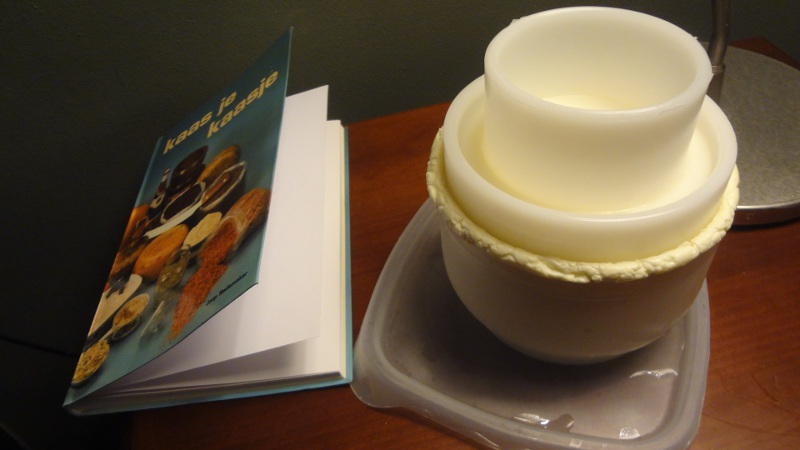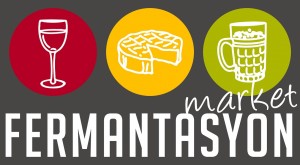That is a statement that I can make since I am Dutch, I use fresh milk from Dutch cows living on a strict diet of Dutch grass, and I use an “old” recipe from a Dutch cheese maker.
The recipe comes from the book “Kaas je kaasje” written bij Joop Rademaker. It means “Cheese your little cheese”. Which also does not make any sense in Dutch.The book is originally from 1982 but it has been updated by his brother (I believe) in 1987 according to the knowledge of these times! Yes, I feel nostalgic.
It is a small book with only 1 recipe! But with this recipe it explains quite a lot about the steps in making cheese.
Normally I believe that I don’t have much to add to the cheese making world but perhaps somebody is interested in an at least 30 year old recipe of a dead Dutch cheese maker.
Here is his recipe for 9 liters more or less in his words. (He does not waste a lot of words)
- Milk 9 litres
- Add mesophylic culture 1% or buttermilk 2%
- Heat milk to 29 C
- Add 36 drops of rennet 2,25gr
- Leave for 30 minutes
- Cut and let rest 10 minutes Not clear how big to cut but he mentions pea size
- Remove whey. 3 litres
- Add hot water to 33 C while stirring Water should be 75-80 C
- Stir 10 min
- Remove again 3 litres whey.
- Add hot water again to 36 C. He warns here about not exceeding 37 C. It kills the bacteria and causes a defect in the finished cheese.
- Stir 10 min
- Cover and let ripen 30 min
- Fill the mold. Place the mold in the whey and fill it there
- Place the mold up side down for 10 minutes
- Place cheese in a press and press for 30 minutes with half pressure. For cheeses 500 or 1000 gram, use 750 gram or 1500 gram weight
- Turn cheese and press with full pressure (1500 gram or 3000 gram) for 3,5 hours
- Let ripen covered but without cheese cloth for 8 – 10 hours
- Put cheese in brine for 6 – 12 hours.
- Coat cheese after 24 hours
- Keep cheese in a cool not too dry space for example your basement. Turn daily for a few weeks. Weekly later.
Each step has it’s own small chapter in the book with some how and why’s. I tried to include the important remarks.
As you can see he does not use Calcium chloride. If you do not have fresh milk you should!
What I was most surprised about was the pressing mentioned in the recipe. As you can see it is only very lightly pressed compared to recipes found in other books or the internet.
I made it this way a few times and never had the patience to let it mature. Eaten after a few months it is already a beautiful cheese. Tasty, soft, young.
I don’t know if it is a Dutch habit but what we do is the following: We cut the cheese in blocks of about 2x2cm and gobble it away with some mustard. Sharp French mustard or (for an old sharper cheese) better a mustard with some honey.
BUT if you want to taste cheese it is so much better to take the cheese out of the refrigerator 20 minutes on beforehand and cut the cheese in much smaller parts and eat them with a glass of wine saying AAHHH after each bite. It really increases the experience!
Hans


